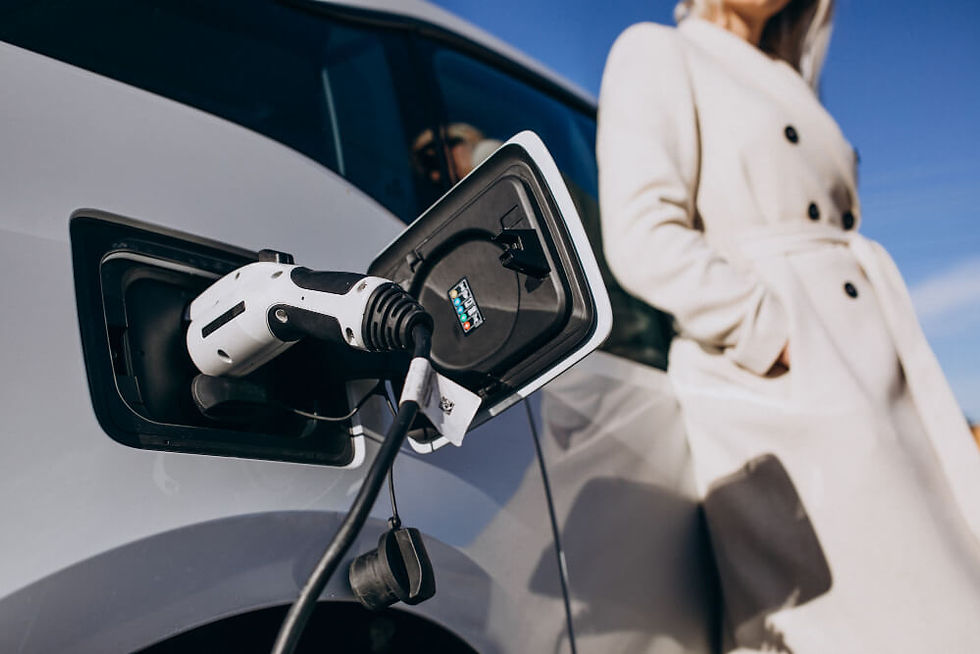EV Charging in Parking Lots: Installation Insights
- Social Media
- Nov 6, 2024
- 4 min read
As more and more people switch to electric vehicles (EVs), the key question to consider is, “Where will I charge?” Imagine pulling into a parking lot and conveniently charging your car while you shop, work, or grab a coffee. That's the wave of the future, and for many, it’s already here. But what does it take to set up EV charger installation in parking lots? Let’s dive into the essentials, including costs, challenges, and why installing chargers is a win-win.

Why Parking Lots Are Perfect for EV Chargers
Parking lots give you the best spot for EV charging. They provide space for multiple charging stations, and drivers can charge their vehicles while they go about their day. EV charger installation in parking lots benefits everyone:
Convenience for EV Drivers: Parking lots are commonly observed in high-traffic areas, like malls, offices, and public buildings. Installing chargers here means EV drivers don't need to go the extra mile to charge.
Income for Parking Lot Operators: EV charging stations can bring in extra revenue through charging fees.
Sustainability Goals: Installing chargers supports comprehensive environmental aims, as they encourage the use of EVs over fossil-fuel-based vehicles.
What to Consider Before Installation
1. Power Supply and Capacity
A key contributing factor in EV charger installation is ensuring that the lot can handle the power requirements. EV chargers can be categorized into different types, from Level 1 (basic) to Level 3 (fast chargers), each with varying power needs. Before installation, it’s essential to:
Check the electrical infrastructure to see if upgrades are necessary.
Consult with utility companies to understand power availability and grid capacity.
2. Location and Layout
Where you place EV chargers in a parking lot matters. Here’s why:
Accessibility: Choose spots that are easy to reach and close to existing power sources.
Visibility: Chargers should be visible so EV drivers can find them easily.
Safety: Ensure the area is well-lit and has signage to prevent ICE (internal combustion engine) vehicles from parking in charging spaces.
3. Expense of EV Charger Installation
Cost is a primary consideration. Installing chargers involves more than just the equipment:
Infrastructure Upgrades: As mentioned, power capacity upgrades can be a significant cost.
Licenses and Authorizations: Local regulations vary, so you may need permits or approval from governing bodies.
Installation Manpower: Certified electricians are required for safe and compliant installation, which adds to the total cost.
Maintenance and Upkeep: Similar to other infrastructure projects, EV chargers require maintenance to ensure they’re functioning well.
Average costs can vary depending on the type and number of chargers, with Level 3 chargers costing more than Level 1 or Level 2. But the benefits can far outweigh these initial expenses in the long run.
Steps for Smooth EV Charger Installation
Thinking of setting up chargers? Follow these steps to ensure a seamless EV charger installation experience.
Step 1: Assess Demand
Before any installation, consider how many EV drivers will likely use the chargers. Conduct surveys, review industry data, or evaluate traffic patterns in the area.
Step 2: Choose the Right Charger Types
As mentioned, chargers come in different types. Level 1 is usually for residential use and charges slowly, while Level 2 is more suitable for workplaces and public parking lots. Level 3 chargers, though the most costly, offer quick charging and are ideal for high-demand areas.
Step 3: Plan the Layout
Think about the user experience. Keep the charging stations in well-lit, accessible areas with clear signs and instructions. Also, think about future needs. Installing extra conduit can save you time and money if you want to add more chargers later.
Step 4: Secure Permits and Hire Professionals
EV charging station installation requires permits and compliance with building codes. Hiring certified professionals not only ensures safety but also helps you meet regulatory requirements.
Step 5: Invest in Maintenance
An often-overlooked step in EV charger installation is planning for maintenance. Keeping chargers in good working order is essential to ensure reliability for users.
Benefits of Installing EV Chargers in Parking Lots
1. Attracts New Customers
For businesses, installing chargers is a way to attract eco-conscious customers. Studies show that EV drivers are likely to patronize businesses with charging stations.
2. Earn Extra Revenue
Many charging stations are pay-per-use, allowing parking lot owners to earn revenue. Some businesses even choose to offer free charging as a perk, drawing in more customers.
3. Boosts Property Value
Having EV chargers can increase a property’s value, as it’s an attractive feature for future tenants or buyers who prioritize sustainability.
4. Supports Green Initiatives
By promoting EV use, parking lots play a role in reducing carbon emissions, making our cities cleaner and greener.
Key Challenges in EV Charger Installation
Despite the benefits, there are some hurdles:
High Initial Cost: The upfront investment can be significant, especially for Level 3 chargers.
Limited Grid Capacity: In some areas, grid limitations can make installation challenging.
Maintenance Needs: Like any infrastructure, chargers need upkeep to function correctly.
Closing Remarks
Installing EV chargers in parking lots is more than just a trend; it’s a necessary shift toward a sustainable future. Though EV charger installation requires careful planning and investment, the benefits for property owners, businesses, and drivers are undeniable. By setting up these chargers, you’re not only catering to the growing number of EV drivers but also contributing to a cleaner, greener future.
So, is it worth it? Absolutely! Every EV charger installed brings us one step closer to a world where clean, efficient transportation is accessible to all.







Comments